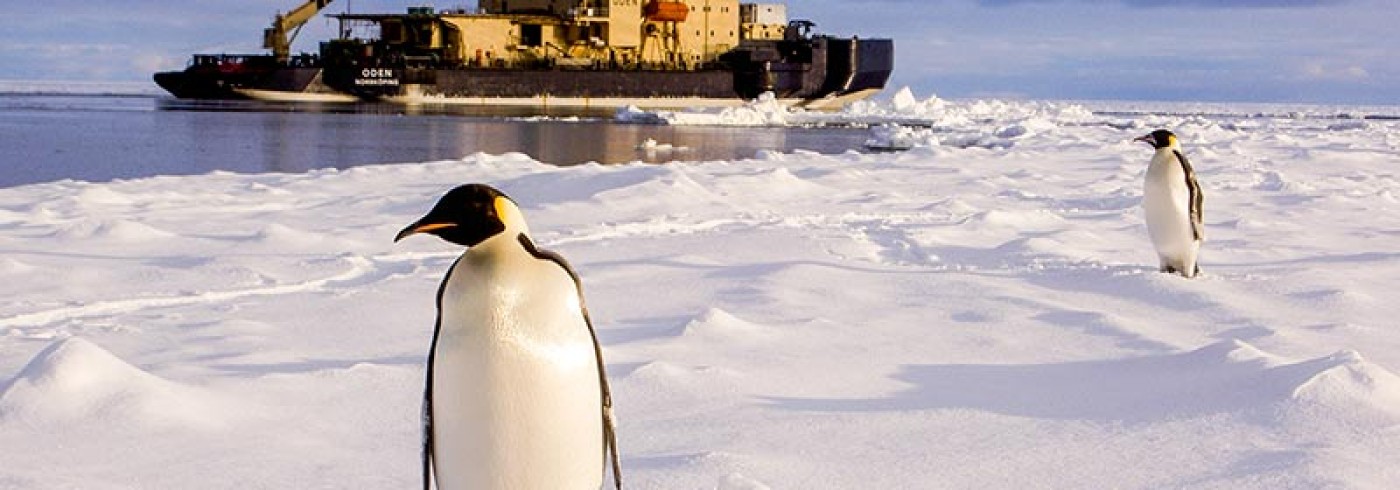Oden Southern Ocean - US Science projects
29 November 2007 - 7 January 2008The main objective for the icebreaker Oden’s visit to the Southern Ocean was to open up a shipping lane for the supply ships to McMurdo Station run by the National Science Foundation (NSF). However, as Oden is well equipped for research and can operate in areas that are otherwise difficult to reach when the sea is ice covered, the cruise provided an excellent opportunity for several Swedish research groups to develop collaboration with American colleagues on research in Antarctica. In total 14 scientific projects were put into motion, of which half were Swedish.
Most of the research interest was directed to the polynia in the Amundsen Sea. Several vessels have studied the Amundsen Sea at a later point during the summer season, but very few have endeavoured the task during early spring due to the problems posed by the presence of heavy sea ice that has to be penetrated during any other season than summer.
Furthermore, research was also conducted in other areas en route. Sampling of surface water and air could be carried out under way, while deep water samples were taken during stops, when also ice, snow, brine (very saline water inside the ice) and plankton samples were taken. In addition, a couple of groups took the opportunity to take surface water and air samples during the journey from Sweden to Punta Arenas, Chile, in order to obtain data from both sides of the equator and thereby enable a better comparison between the northern and southern hemispheres than has previously been possible.
Science projects

Icebreaker Oden made its second voyage to Antarctica during Oden Southern Ocean 2007/08. Photo: Jakob Wegelius
Ocean-atmosphere-ice interactions
Different areas of Antarctica seem to be very differently affected by global warming. While the area around the Antarctic Peninsula appears to feature among those areas experiencing most warming as seen in changes in sea ice dynamics, the area around the Ross Sea seems to be cooling. A group from Lamont-Doherty Earth Observatory studied this complex interaction.
Primary production and nutrient budgets
A group from Virginia Institute of Marine Science concentrated their efforts on understanding the net primary production in phytoplankton communities. Apart from measuring the occurrence of specific phytoplankton they also studied the sedimentation of carbon, nitrogen, and silicon to deeper water with particulates. These processes are important to supply nutrients for deep-water communities.
Microbiology
The American microbiology group from the University of Georgia studied the response of pelagic bacteria to particles in relation to particle production and composition. Of particular interest was the influence of bacteria in turning biological material back to inorganic nutrients that can be reused by other microbes, and ascertaining if this may be affected by climate change.
Phytoplankton communities and climate change
Researchers from the University of South Carolina ran phytoplankton cultures that were manipulated to simulate different possible effects of increasing atmospheric carbon dioxide concentrations and climate change. They also studied the effects of a number of factors that limit the growth of algae in the Southern Ocean, particularly iron and vitamin B12.
Bioactive trace metals
Many metals have important biological functions, and the effect of the metal may differ dependent on whether it is present in the water column in a dissolved state or in particle form. A group from Rutgers University studied the occurrence and interrelation of various metals in relation to phytoplankton and bacterial communities.
Meso- and microplankton community structure
The carbon flux is substantially affected by interaction between different species. Woods Hole scientists counted various types of plankton with a specially developed microscope camera, both in surface water continuously in-line on the seawater intake, and in deep water on the rosette sampler.
Artists and teachers programme
In addition to the science projects the expedition also had participation of a Swedish artist that used the Antarctic environment as inspiration for his art, and an American teacher participating in the PolarTREC (Teachers and Researchers Exploring and Collaborating) programme.



